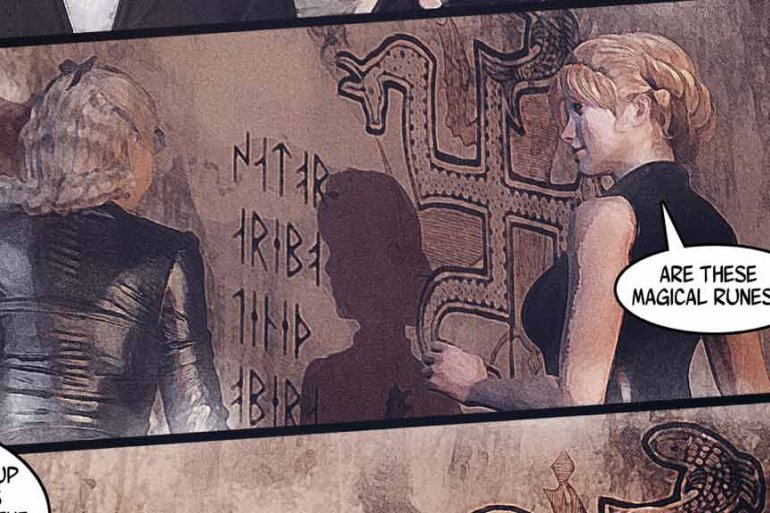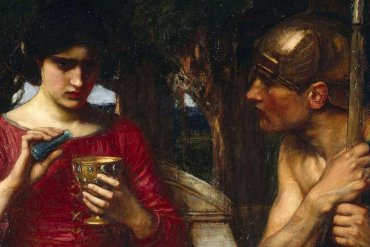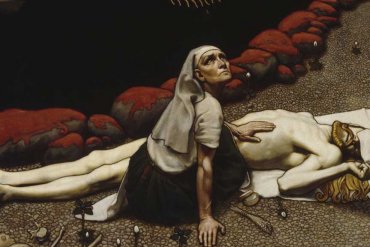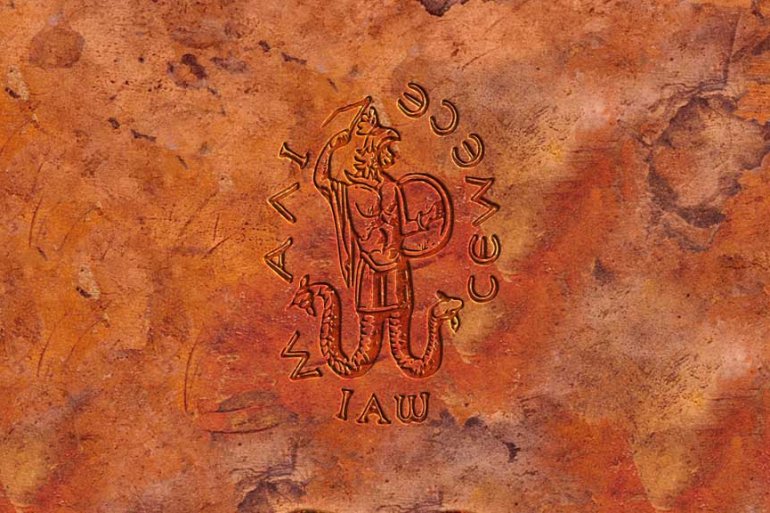Wagner’s mythic medievalism and Teutonic underworldliness was shared by the English Pre-Raphaelite Brotherhood’s embrace of William Blake’s prescient dictum—Gothic form is living form—the largely unacknowledged creed of Victorian architectural revival. Barbaric An adjective that had once meant “barbaric,” “Gothic” had been redeemed by perception of the medieval Catholic Church’s architectural embrace of the divine-maternal, the mysterious, tempting curve: the very essence of...
Heretic Middle English: from Old French heretique, via ecclesiastical Latin from Greek hairetikos ‘able to choose’ (in ecclesiastical Greek, ‘heretical’), from haireomai ‘choose’. In the Encyclopaedia Britannica one can read:“The word heresy is derived from the Greek hairesis which originally meant an act of choosing, and so came to signify a set of philosophical opinions or the school professing them. As so...
The sator a repo formula was well known throughout the ancient and medieval worlds, and in fact, known as the “Devil’s latin” or the “Devil’s Square”. It remained quite popular in Scandinavia into the 19th century as protection against theft and various illnesses. The magical effect of the formula lies in the fact that if properly spelt and laid out, it constitutes a 25 letter word-square, reading the same horizontally and vertically, left to right and in reverse: SATOR AREPO […]...
In the enigmatic world of codes and their deciphering, an intriguing link emerges with the name “Dietrich.” In German, “Dietrich” means a skeleton key, a tool designed to unlock hidden mysteries. This connection resonates with the Maier Files series, where Rolf Dietrich is referred to as “the key.” But the key to what? This question becomes the gateway to a profound exploration...
Legend tells us that one day Ilias, founder of the city of Troy, was asleep and had an extraordinary dream that the gods were communicating with him. When he woke up he found nearby a statue of a woman holding a shield and carrying a spear. It was the sacred statue of Pallas Athena, the Palladium. We know from Plutarch that in...
Socrates sometimes spoke of his daemon, meaning a good spirit who guided him through life. This might seem an alien concept for most of us today. But one can not deny as a matter of historical fact that folks who believed in idealism as a philosophy of life have always tended to trust in spirits, gods and angels. When it comes to the great-weaving cosmic thoughts, the active principles behind the appearances of things, many idealists and romantics have asked […]...
Ernst Winkler: “After reading your book, herr Maier, I am hardly further along concerning the heart of the question.” Otto Maier: “How by the devil, my dear Ernst! . . . Do you not read the white of works? Certainly, those who read only the black of a writing will not have seen anything decisive in my book; but you, read the...
Trying to understand one of the many hidden histories and layers within Maier files is trying to understand the Grail quest and its influence on many even nowadays. The Arthurian legends are an obvious start. The fabulous stories of King Arthur and the Grail are currently so well known that they extensively researched and remarked upon by many different authors and researchers....
The Greek philosopher Heraclitus had said: “A hidden connection is stronger than one we can see.” Otto Maier was always fascinated with Time. Things occupy space—but how many of them there are (or could be) belonging to time? If you take off the face of a clock you won’t find time there, only human fabrication. Those numbers, circling round, make time almost credible—as if they aroused a sixth sense attuned to its presence, since it slips by the usual five […]...
For those who are into the multi-level and the different themes of the Maier Files already noted that one of the themes associates with the Grail Quest, the hidden knowledge and the search for this power. The quest of the Golden Fleece and the Argonauts has always been in connection with the quest of the Holy Grail. And yes, also this tale...
llmarinen the Smith, was a young companion of the wizard and demi-god Väinämöinen. Väinämöinen was the god of chants, songs and poetry; in many stories Väinämöinen was the central figure at the birth of the world. llmarinen But llmarinen was a wizard in his own right. He loved the daughter of Louhi, Sorceress of the North. The maiden loved him, too, but...
Carl Jung had written extensively on Abraxas. In his 1916 book called The Seven Sermons to the Dead, Jung called Abraxas a God higher than the Christian God and Devil that combines all opposites into one Being. Abraxas was a polymorphous world spirit which permeates — or even encompass — the very fabric of existence. Abraxas is … a thousand-armed polyp, coiled knot of winged serpents … the hermaphrodite of the earliest beginning … the lord of toads and frogs, […]...













